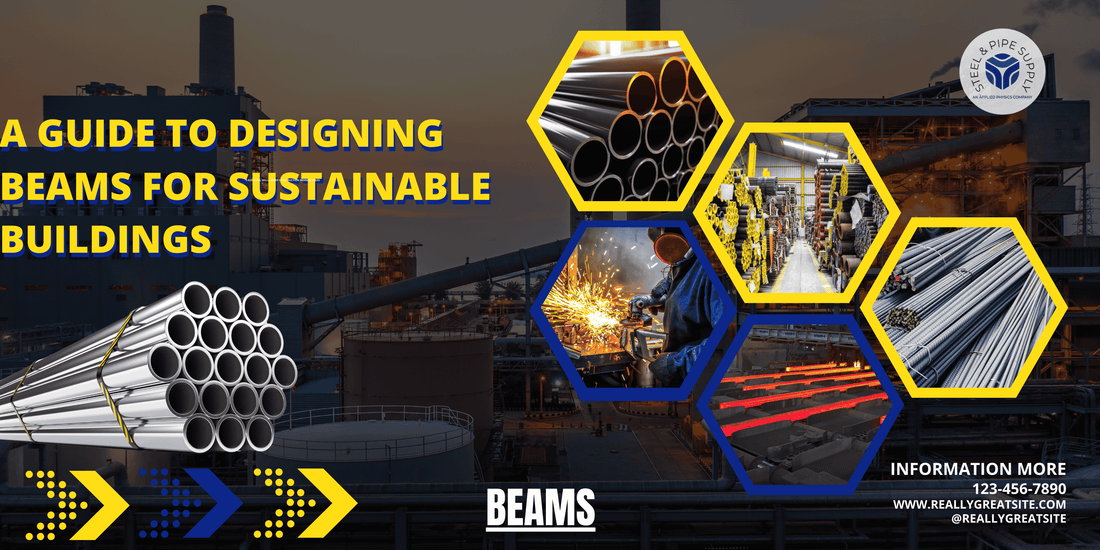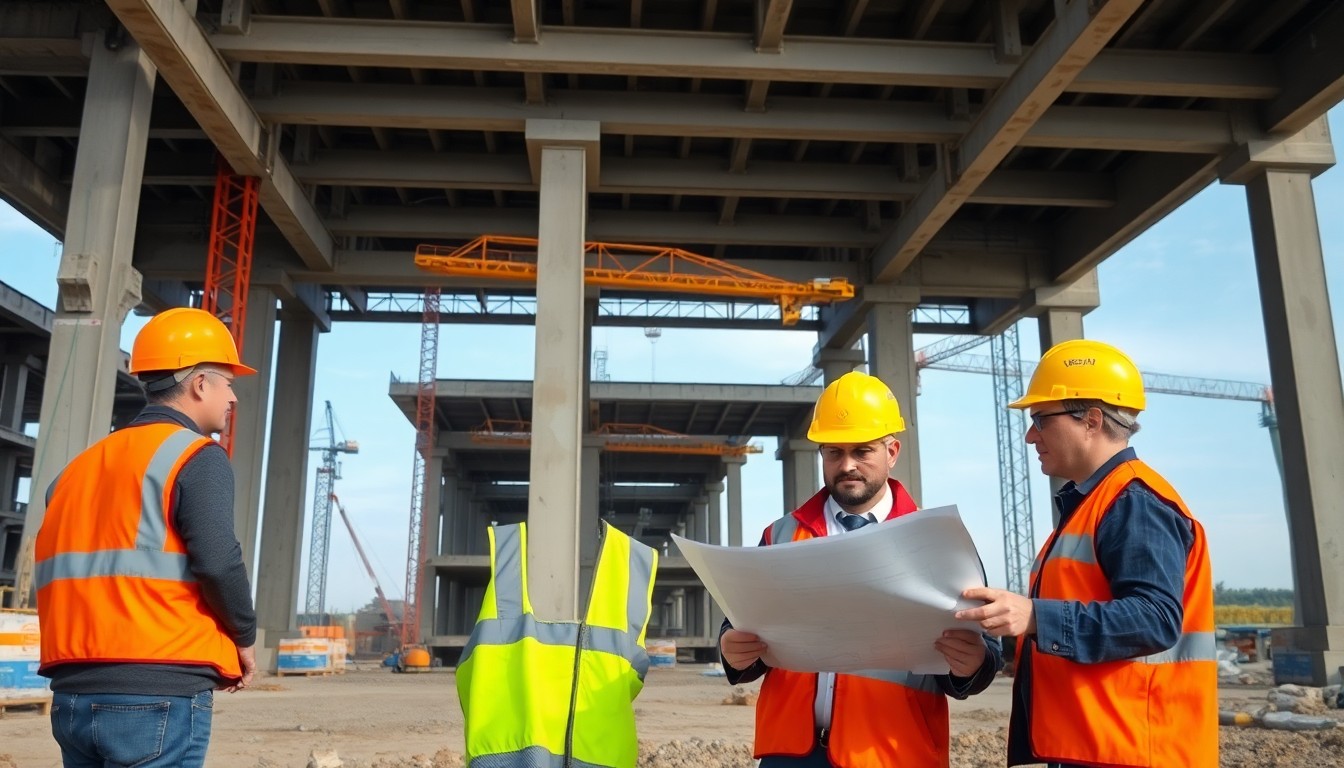
A Guide to Designing Beams for Sustainable Buildings
Share
Introduction
Sustainable beam design is a critical aspect of modern architecture and construction, reflecting a growing awareness of environmental responsibility. Beams, as structural elements, play a vital role in supporting the weight of buildings and distributing loads. Their design and material selection can significantly impact a building's overall sustainability.
By prioritizing sustainable practices in beam design, architects and engineers can reduce the carbon footprint of structures, enhance energy efficiency, and promote the use of renewable resources. This approach not only benefits the environment but also aligns with the increasing demand from consumers and regulatory bodies for greener building practices. Moreover, sustainable beam design contributes to the longevity and resilience of buildings.
Structures designed with sustainability in mind are often more adaptable to changing environmental conditions and can withstand the test of time better than those built with conventional methods. This adaptability is crucial in an era where climate change poses significant challenges to infrastructure. By integrating sustainable principles into beam design, professionals can create buildings that are not only functional but also harmoniously aligned with their surroundings, ultimately fostering a more sustainable built environment.
Key Takeaways
- Sustainable beam design is crucial for creating environmentally friendly and energy-efficient buildings.
- Factors to consider in sustainable beam design include material selection, energy efficiency, and long-term durability.
- Choosing sustainable materials for beam construction can significantly reduce the environmental impact of a building.
- Incorporating energy-efficient design in beam construction can lead to lower energy consumption and operational costs.
- Successful sustainable beam design can be achieved by integrating it with overall building performance and considering real-world case studies.
Factors to Consider in Sustainable Beam Design
When embarking on sustainable beam design, several factors must be taken into account to ensure that the final product meets both structural and environmental goals. One of the primary considerations is the load-bearing capacity of the beam, which must be carefully calculated to ensure safety and stability. Engineers must analyze various loads, including dead loads, live loads, and environmental loads such as wind and seismic activity.
This analysis informs the choice of materials and dimensions, ensuring that beams are not only efficient but also capable of supporting the intended structure without excessive resource use. Another critical factor is the lifecycle assessment of materials used in beam construction. This assessment evaluates the environmental impact of materials from extraction through manufacturing, use, and eventual disposal or recycling.
By selecting materials with lower embodied energy and a smaller carbon footprint, designers can significantly enhance the sustainability of their beams. Additionally, considerations such as local availability of materials can reduce transportation emissions, further contributing to a building's overall sustainability profile. Ultimately, a holistic approach that considers both structural integrity and environmental impact is essential for effective sustainable beam design.
Choosing Sustainable Materials for Beam Construction
The selection of materials is paramount in sustainable beam design, as it directly influences both performance and environmental impact. Traditional materials like concrete and steel have high embodied energy due to their production processes; however, innovative alternatives are emerging that offer more sustainable options. For instance, engineered wood products such as cross-laminated timber (CLT) provide a renewable resource that sequesters carbon throughout its lifecycle.
CLT not only reduces reliance on fossil fuels but also offers excellent strength-to-weight ratios, making it an attractive choice for modern construction. In addition to wood products, recycled materials can also play a significant role in sustainable beam construction. Recycled steel and concrete can be repurposed to create new structural elements, minimizing waste and reducing the demand for virgin materials.
Furthermore, incorporating materials with high thermal mass properties can enhance energy efficiency by regulating indoor temperatures, thereby reducing heating and cooling demands. By thoughtfully selecting materials based on their sustainability credentials, designers can create beams that contribute positively to both building performance and environmental stewardship.
Incorporating Energy-Efficient Design in Beam Construction
| Energy-Efficient Design Metrics | Value |
|---|---|
| Insulation Material | High R-value insulation |
| Window Type | Low-E windows |
| Lighting | LED lighting |
| Beam Material | Engineered wood beams |
| Heating System | High-efficiency HVAC system |
Energy efficiency is a cornerstone of sustainable building practices, and beam design can significantly influence a structure's energy performance. One effective strategy is to integrate beams into the overall thermal envelope of a building. By using insulated beams or incorporating thermal breaks within the beam design, architects can minimize heat loss during colder months and reduce heat gain in warmer seasons.
This approach not only enhances occupant comfort but also lowers energy consumption for heating and cooling. Additionally, the orientation and placement of beams can be optimized to maximize natural light penetration while minimizing glare and heat gain. For example, strategically placing large windows supported by appropriately designed beams can harness daylight effectively, reducing reliance on artificial lighting during daytime hours.
This integration of energy-efficient design principles into beam construction not only contributes to lower operational costs but also supports broader sustainability goals by reducing the overall energy demand of buildings.
Designing Beams for Long-Term Durability and Low Maintenance
Durability is a key consideration in sustainable beam design, as it directly affects the lifespan of a building and its maintenance requirements. Selecting materials that are resistant to environmental stressors such as moisture, pests, and temperature fluctuations is essential for ensuring long-term performance. For instance, using treated wood or naturally durable species can enhance resistance to decay and insect damage, while advanced coatings can protect steel beams from corrosion.
Moreover, designing beams with low maintenance in mind can significantly reduce resource consumption over time. This includes minimizing joints and connections that may require regular inspection or repair. By employing prefabricated components or modular designs, builders can streamline construction processes while enhancing durability.
Ultimately, a focus on long-term durability not only benefits building owners through reduced maintenance costs but also contributes to sustainability by extending the lifecycle of materials used in construction.
Integrating Sustainable Beam Design with Overall Building Performance
Optimizing Beam Design for Thermal Performance
This approach involves considering how beams interact with other structural elements, systems, and materials within the building. For instance, beams should be designed to work in conjunction with insulation systems to optimize thermal performance while also accommodating mechanical systems such as HVAC ducts or plumbing.
Collaboration and Innovation in the Design Phase
Furthermore, collaboration among architects, engineers, and contractors during the design phase can lead to innovative solutions that enhance both structural integrity and sustainability. By utilizing advanced modeling techniques such as Building Information Modeling (BIM), teams can visualize how beams fit into the larger context of the building's design and performance goals.
Achieving Energy Efficiency and Environmental Responsibility
This integration ensures that every aspect of the building works synergistically towards achieving energy efficiency, occupant comfort, and environmental responsibility. By adopting a holistic approach to sustainable beam design, building projects can minimize their environmental footprint while providing a comfortable and healthy indoor environment for occupants.
Case Studies of Successful Sustainable Beam Design in Real-World Projects
Several real-world projects exemplify successful sustainable beam design practices that have made significant contributions to environmental stewardship and building performance. One notable example is the Bullitt Center in Seattle, often referred to as the "greenest commercial building in the world." The structure features glulam (glued laminated timber) beams that not only provide structural support but also contribute to carbon sequestration. The design prioritizes natural light and ventilation while utilizing energy-efficient systems that minimize operational energy use.
Another compelling case is the Bosco Verticale (Vertical Forest) in Milan, Italy. This residential complex incorporates reinforced concrete beams designed to support extensive greenery on its balconies while maintaining structural integrity. The integration of vegetation not only enhances aesthetic appeal but also improves air quality and biodiversity in an urban setting.
These case studies illustrate how innovative beam design can play a pivotal role in advancing sustainability goals while creating functional and visually striking buildings that resonate with their environments.
Conclusion
Designing beams for sustainable buildings involves careful consideration of materials, energy efficiency, and environmental impact. By prioritizing the use of renewable resources and innovative design techniques, architects and engineers can significantly reduce carbon footprints. Implementing advanced technologies and conducting thorough life cycle assessments ensure long-term sustainability. Collaboration among stakeholders is essential to achieve resilient and eco-friendly structures. Ultimately, sustainable beam design contributes to the broader goal of creating a greener and more sustainable built environment.

